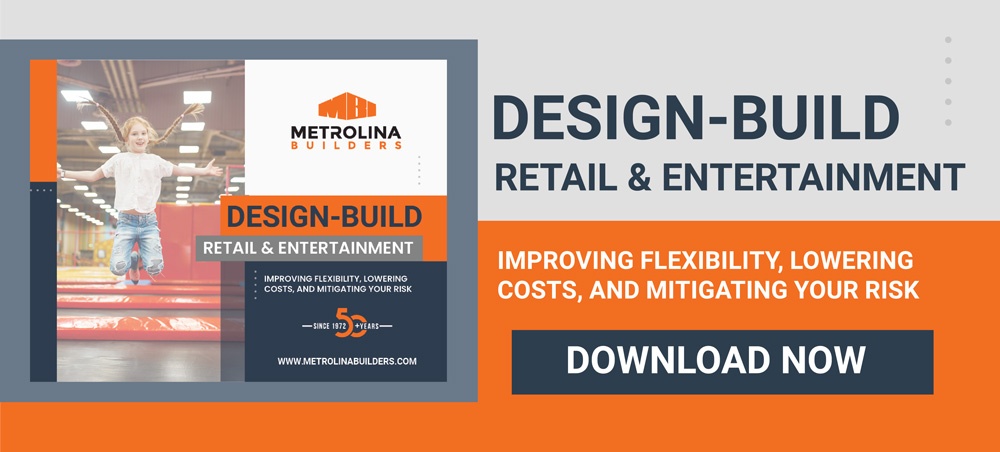The retail industry looks much different today than it did just a few short years ago — and that’s not necessarily a bad thing.
There might not be a Best Buy on every corner, but savvy retailers continue to thrive amidst changes in consumer behavior, global health pandemics, and even material shortages.
What sets apart the winners from the losers? Here are three retail design & construction trends every owner and investor should know.
Trend #1: The Rise of Flexibility and Mixed-Use Environments
The days of a big-box retailer on every corner are over. Just ask renowned Charlotte architect Stephen Overcash, principal at ODA Architecture:
“The future of retail is flexibility. It will be made up of mixed-use construction and local neighborhood services. The ones who thrive will be the small, 6,000 - 12,000 sq ft rows of shops with a restaurant on each end and plenty of patio space. It’s checking multiple boxes.”
The “checking multiple boxes” part is critical.
A building that can house a coffee shop one day and an insurance agency the next is the key to long-term success. Besides, the folks at City Hall shouldn’t really care if you’re putting in a coffee shop or an insurance agency. It’s the flexibility that matters.
Retail spaces are being combined with residential, office, and other commercial spaces to create vibrant, walkable communities. This trend is driven, in part, by the desire for more sustainable, livable communities that offer a wide range of amenities.
By creating mixed-use spaces using the design-build method, you can meet the needs of a diverse range of tenants, developers can create successful retail spaces that are built to stand the test of time.
Trend #2 — Bringing the Great Outdoors Inside
The pandemic made one thing certain: those who have ample outdoor spaces are far more likely to thrive than those without them — and if you can’t serve customers outdoors, the next best thing is to bring the outdoors to them. Here is Stephen Overcash again with a valuable insight:
“So many studies have been conducted, from big-box retailers like Walmart to your smaller moms & pops, and they’ve all found the same thing: people spend more when they’re surrounded by natural light. The more sunlight you can feed into the space, the better. People feel safer and more comfortable outdoors. The big winners will be those who understand how to blend those worlds together.”
Trend #3 — The Magic Ratio Is More Important Than Ever
The success of any project boils down to a magic ratio — a precise depth you always use — and it works for offices, retail, and just about everything you can dream up. It’s typically between 60 and 120 feet. This depth provides the right balance of space for tenants and helps to ensure that the building is flexible enough to accommodate a variety of tenants over time.
This magic ratio is based on the idea that spaces that are too shallow are not flexible enough to accommodate a wide range of tenants, while spaces that are too deep can become difficult to lease and may not be efficient from an operational standpoint.
The magic ratio is particularly important in retail design because it helps to ensure that there is enough space for tenants to showcase their products and services, while also ensuring that the building is efficient and easy to manage.
By designing retail spaces with the magic ratio in mind, developers can create buildings that are attractive to tenants, while also maximizing the value of the space.
Need Help Designing, Planning, and Building Your Next Project?
If you're looking to stay ahead of the curve and take advantage of the latest trends in retail construction and design, then working with a knowledgeable and experienced design-build firm is a must.
At Metrolina Builders, we love turning our client’s visions into reality. Our team works closely with our partners to understand their needs and goals, evaluate current market and design trends, and always get the job done — no matter what challenges we might face along the way.
Want to learn more? Reach out today!
